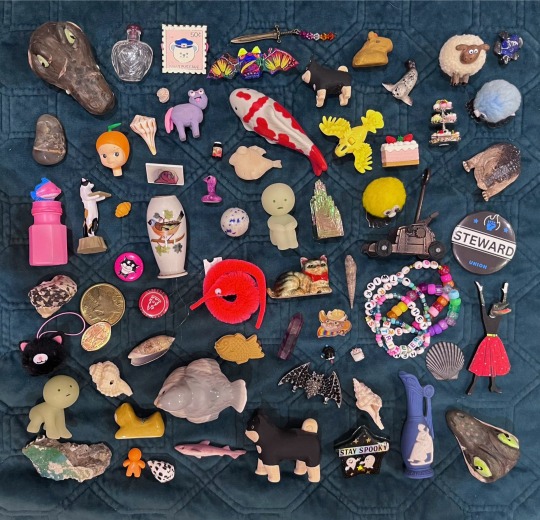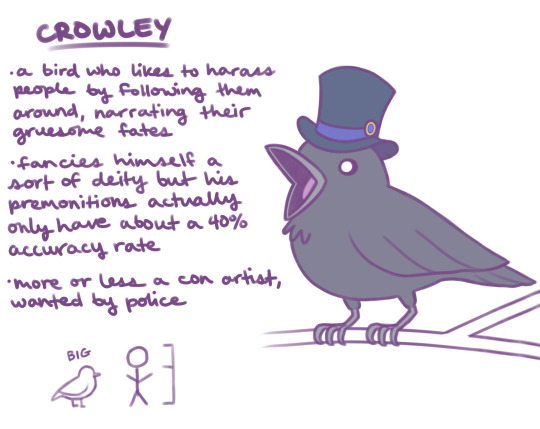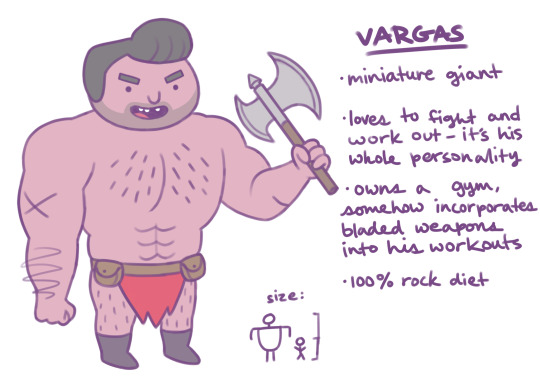#finally i answered it!!
Explore tagged Tumblr posts
Note
"C-Can I hold your hand?" [ him being shy during their first date maybe? xD ]



Upon an inaugural foray into courtship's intricate lattice, she finds herself enmeshed within the silken snare of a preternatural web. The sol stimulates the cityscape with its effulgent aureate beams, bequeathing upon the environment an aura of enchantment. With incipient trepidation, her digits—quivering in resemblance to fragile lepidopteran appendages—skim the brink of her ALABASTER teacup, seeking reprieve within its frigid silhouette.
Chronos, that whimsical conductor, elicits from her chest a cacophony of sentiments with his baton. Every ephemeral moment IGNITES her faculties to an erratic ballet—euphoria cavorting with apprehension; expectancy enlaced with perturbation. Caramel orbs, radiant as melting amber, flit across Ichigo's visage, apprehensively probing his movements for signs of affirming light in the tenuous choreography of their rapport. Amidst a setting redolent of sweetened Camellia sinensis and a harmonious performance wrought by utensils, her facade—gossamer as loomed silk—attempts to shield the roiling combustion within. It is a tempest eager to erode her poise, akin to how unchecked conflagration ravishes chaparral leaving nothing but scorned relics.
Confronted by his innocuous solicitation, her complexion assumes the mantle of dawn's initial roses. Is he perchance searching for a linkage more corporeal? "O-Of course…" Murmurs weakly, her voice scarcely triumphing above the café's staccato tumult. Inoue, forsaking momentary circumspection, ventures her quivering digits forthwith—a tentative encounter with his enduring warmth. "You don’t need to ask." Professes, adorned with a welcoming smile—a frieze of intricate artistry upon her visage.
Her gesture—an ephemeral brush akin to zephyrs' delicate caroms—is steeped in reluctance. 'Tis as though she dreads perturbing the transitory stasis they've crafted together—the slightest irruption might demolish the fleeting splendor that has thus been spun so finely between them. @orangeshinigami

#( — .:。✿*┆ answers ❀ ❞ )#( — .:。✿*┆ her happy ending: canon ❞ )#this is so cute :333#finally i answered it!!
3 notes
·
View notes
Text

Happy one year anniversary to this FNAF post,,
#myart#chloesimagination#comic#fnaf#five nights at freddy's#fnaf fanart#fnaf movie#abby schmidt#golden freddy#coryxkenshin#william afton#springtrap#THIS was a quick lil thing I wanted to make!#they all finally made it to their destination#took them a full year but they got there!#The og post means a lot to me actually#it’s when I started to draw fnaf art and kinda never stopped?#I’ve loved fnaf for a very long time since its come out#so being accepted into its community meant a lot#here’s to another year of fnaf art!!#Also did Abby ever pay Cory or did he just do a freebie#maybe the next movie will answer these pressing questions pff
5K notes
·
View notes
Note
listen. people have always debated which character is the most normal guy but what if it has in fact been crowley the whole time. no string pulling no master plan just a guy who wants to keep his school running and is cursed with problematic students and incidents
honestly I think the funniest possible reveal would be one of two options:
ONE: Crowley has no plot relevance whatsoever. he wears the mask to cover his receding hairline. his darkest secret is the bottle of "medicinal" whiskey under his desk. this man can barely plan a PTA function with six months' advance notice, he doesn't have the time or patience for any kind of overarching master plot involving mutating students or whatever. the only thing wrong with him is that he's been running this school for (mumblemumble) years and, quite frankly, if you'd been putting up with NRC students for a couple of centuries, you'd have totally checked out by this point too.
OR
TWO: Crowley IS actually Raverne and HAS been slowly enacting a master gambit...to embezzle school funds. the overblots are still completely incidental. he has somehow less idea of what's going on than we do. we confront him about it and he's just like

#art#twisted wonderland#twisted wonderland spoilers#twisted wonderland episode 7 spoilers#twisted wonderland book 7 spoilers#just sorta the general episode 7 tags there#this meme has surely been done with crowley before but i felt like i needed to#honestly the 'everyone actually just has blot radiation poisoning from the chandelier' was my serious theory for a while#and i'm still like...well...i dunno...#we're at the point where i almost think it would be funnier if they never actually explain what's up with crowley#a buttress falls on him during the final battle and we simply never find out#except no i do actually need to know. i've had too long to stew over it. i need answers!!!!#my current baseless speculation is that it's raverne's body but they just like...stuffed a bird brain in there or something idk#look the longer they make me wait the more bonkers my theories are going to become#'crowley has no connection to raverne and we're all just reading way too much into it' would be kind of an incredible non-twist though#yana sitting there like oh shit. oh no. my masterful reference to that's so raven has been taken wildly out of context.
2K notes
·
View notes
Note
Hear me out! Danny finds his human form slowly getting more eldrich as he gets older (and more powerful) and ends up going to Gotham where people are way less likely to ask questions!
Sadly when the people of Gotham see Danny, oops my shadow has eyes now, Fenton they just assume he's gonna be a new Rouge!
Que the bat fam watching Danny waiting for him to make his move, over-analyzing everything he does. Mans can't even buy a new laptop without Bruce breathing down his neck about it
This would be an issue if Danny wasn't such a little troll, and he starts buying more obviously ominous things only to openly use them in improperly boring and normal ways. Like buys a death lazer and can be seen using it to make toast, buys a cursed box full of death themed artifacts and uses it as a coffee table, that kinda stuff.
Every time the bat's assume 'this is it!' And gets ready to take him down, only to see Danny setting up a new 'coat rack' made of kriptonite
Even better when they see him tinkering on some kind of doomsday device, the kind that looks super evil and dangerous and even has a red count down timer on the front and- it's a fucking air frier again! He already has three! Why does he keep making air friers?! Obviously this must be some kind of scheme
I raise you: Danny starts selling his things out to random citizens (they've all been intensely screened). The bats panic thinking this is an attempt to cripple Gotham in one fell swoop. Nope. Ms. Randall just really needed a new air purifier and Danny had a toxin dispenser that was just collecting dust.
I imagine though that he might start to notice that the bats are focusing on him a little too much which is a problem considering there are things going down in Gotham that actually need their attention. But at the same time, our resident ghost boy isn't ready to stop being a menace just yet. So what does he do? Kill too birds with one stone.
Whenever Danny catches wind of a new plot going down, he does something to draw the bats's attention to it. Two Face planning a robbery? Suddenly Danny is showing up to the bank everyday to work on the vault (he offered to reinforce it for free). The bats get so suspicious they focus hard on the bank and discover Two Face's plot before he can do anything.
The bats pat themselves on the back while Danny giggles in the background. Wonder how long it will take for them to figure out what's going on.
#dp x dc#dc x dp#dpxdc#dcxdp#winter answers#thanks for the ask!#sorry this is so late#i finally have time to go through my inbox so hopefully i'll be getting through the rest of it soon!
4K notes
·
View notes
Note
Silco with wet hair looks 🫦🫦🫦🫦🫦🫦
We all love this man with wet hair!!

Oh wait, wrong picture haha oops, lemme fix that

Local chem baron enjoying his alone time by sitting in a polluted river all by himself. If that isn't sexy then what is
#my art#sketchy sketch#answering stuff#arcane#silco#finally had the time to draw this#i think im funny yes
2K notes
·
View notes
Text
I adore y’shtola now because every single plan she comes up with is nigh-guaranteed to be the most unhinged idea ever thought up by cat or man. Being pursued by cops? COLLAPSE THE TUNNEL AND TELEPORT DIRECTLY INTO HEAVEN. Need to distract the Children of Everlasting Dark? THROW BEEHIVES INTO THEIR HOUSES. Need to perform a diving save into a bottomless pit? TELEPORT DIRECTLY INTO HEAVEN. AGAIN. Need to get on Mt. Gulg but air travel isn’t feasible? GIANT ROBOT. Need a portal to hell? MAKE A DEMON. That doesn’t work? SHOOT A LASER. AT THE MOON. Banger after banger.
#ffxiv#final fantasy xiv#yshtola rhul#y’shtola#and she’s SO casual and confident in doing these things that its easy to forget that they are bonkers sorts of plans#if she wasn’t so smart with such a good track record she’d be ridiculous#there was a poll going around like ‘if the WoL DID turn evil who has the best chance of stopping them’#and i know now the answer is yshtola because shes the only motherfucker who could come up with a plan like ‘evade death by Disintegrating’
3K notes
·
View notes
Text


Link Click Season 2 finale: LU GUANG DID WHAT??
Link Click Bridon Arc finale: LU GUANG DID WHAT??
#link click#link click season 2#link click bridon arc#link click spoilers#shiguang dailiren#lu guang#random saying#HOLY SHIT WHAT THE FUCK#LU GUANG COME BACK I HAVE TOO MANY QUESTIONS#tbh Bridon arc answers like 2 questions then raises 10 more#its not LG if he doesnt do some huge shit in the finale#like he got stabbed in last minutes of S1 too#id never thought itd get topped again and again every season
924 notes
·
View notes
Text

the contents of my trinket shelf
#mine#crowcore#trinkets#shinies#collection#curios#been a minute since I posted work has been BUSY and i have so much to clean#i love my trinket shelf though excited to finally hang it up proper#would love to answer any asks about any of my special objects 💖
3K notes
·
View notes
Text




I’m taking you here because I want to tell you that… Ever since I met you, I’ve been thinking less and less about death. You’ve made me realize that I want to keep on living just to spend time with you. That’s the most romantic thing I’ve heard. I make you want to keep living? When you talk to me like that, it’s totally irresistible, you know?
#the heart killers#the heart killers the series#thk#theheartkillersedit#thkedit#*gifs#april.gif#fadelstyle#joongdunk#joong archen#dunk natachai#let me cry a bit tonight#so finally i got my answer as to what did fadel do at that one scene in the earlier episodes: making his own tombstone
834 notes
·
View notes
Text





TWST x adventure time: NRC staff
sorry crewel fans
#twst at#twst#twisted wonderland#dire crowley#divus crewel#mozus trein#ashton vargas#twst sam#my art#this will be the final installment for a while bc i wanna work on other stuff but still happy to talk about this au/ answer asks#enjoy dapper dog divus
1K notes
·
View notes
Text




The moment man devoured the fruit of knowledge, he sealed his fate... Entrusting his future to the cards, man clings to dim hope. Yet, the Arcana is the means by which all is revealed...
** Reuploaded images with GLAZE
#finally finished with this painting#and i have moved on to persona 4 in the meantime#i skipped p3 the answer for now#cos gurlll... it tough ain't gonna lie#persona 4 is alright overall#though gotta admit i am really missing the p3 gang a whole lot#the social links and story hits different there somehow#nonetheless excited to see what p4 has to bring#persona 3 fanart#persona 3#p3#p3 fanart#persona 3 fes#persona 3 reload#junpei iori#yukari takeba#koromaru#makoto yuki
2K notes
·
View notes
Text

pov: you are charles xavier and you have been invited onto asteroid m
bonus:

#is this suggestive. yes vLKJLKJAA#xmen#xmen tas#xmen comics#erik lehnsherr#magneto#snap sketches#i almost put meteor m girl i gotta get off rivals... <- gonna go play rivals after this jvLKAJK#as a thank you for the lovely reception on the last time i drew erik scandalously. here you are my friends jeLVKEAJLK#im cursed to never be happy with a sultry picture of magneto THIS IS MAKING ME ITCH BUT IM TIRED OF WORKING ON IT#like ITS PASSABLE. just not what i had in my brain ... whatever im posting it and moving on ive spent too much time on it#my last drawing before i officially start classes tomorrow good job snap jeRLKGJEALGJK#ive figured a new method with posting art and my perpetual beef with how the coloring is rendered#because before i touched this up on my laptop the shadows were SO pale it was awful#so i think im just gonna do a final color check on my laptop before posting them here on out#it'll be annoying but whatever#anyway this lowkey a redraw of the first time i draw mags in his asteroid m robe . Bonus Doodle included jELKVJAELKJ#i didnt post that to twitter tho so it counts as something new right ....#anyway. im gonna go away now BYYYE#jk im gonna answer asks in my inbox. i see you lot ...
552 notes
·
View notes
Text
"Gojo should've gotten to live as a person-" THAT’S THE POINT. That is the ENTIRE point of JJK. Every single character who died was someone who "should've gotten to" do a lot of things. Riko should've gotten to live for herself, Geto should've had the chance to be a teenage boy given support and safety, Junpei should've gotten to live without fear, Nobara should've had the chance to let people in without fear, Nanami, Yuki, Mai, Higurama, EVERYONE.
Here's the thing, Gojo is on this list. Gojo isn't the exception because JJK at its core is a story about how overarching systems destroy people; bullying, capitalism, sexism, etc. And this system does not need people to run it. Which is why killing Kenjaku didn't stop shit because yeah he started this mess but its grown beyond him. Fuck, it was there before him.
This is also why despite Sukuna & Uraume being the only ones who are actual threats, nothing is better. The cast got rid of the higher-ups, jujutsu tech as it is, is no more. The major families are dismantled. This should be a victory. This is what the Sashisu gen pointed out as the problem but things have never looked more bleak.
Why? Because the problem isn't Kenjaku, Sukuna, curses, sorcerers or curse users. It's the existence of Cursed Energy itself. This has been pointed out multiple times by Yuki. Its the system and Gojo has been complicit to the system for a long, long time. He's also it's victim. Gojo says he's the exception a lot, but as everyone has rightfully pointed out, he was nothing more than a weapon to jujutsu society.
JJK has followed a very clear pattern to every character right from Geto to Junpei to Riko; characters are representatives of systems of suppression, and they will not escape it. I can't recall a single character that's escaped unscathed, much less alive.
Is it disrespectful? Yes. Is it demeaning? YES. There has not been a single character death that's been dignified in JJK. It's all on a scale of bearable to absolutely horrifying. It is genuinely wild seeing people resort to threatening the author AGAIN. Calm the fuck down. You are entitled to feeling upset about how Gojo has been treated but Yuta stans are being calm despite Yuta arguably suffering the "he is a weapon" thing WORSE. It's still a fictional character and JJK's narratives never treated Gojo with any exceptions despite the character saying otherwise.
#gojo satoru#jjk#jujutsu kaisen#jjk meta#jjk 261#satoru gojo#jjk manga#i really like gojo and appreciate his character btw#and i made my peace with 236#i also think we kind of got our answer to geto's question about being the strongest#gojo 100% was forced to give away his body to fight sukuna#but gojo.....isn't his body- isn't his six eyes#in his final moments as gojo satoru-what did he see him as?#we see him in some disembodied form unattached to his body#our kast glimpse of gojo as a oerson is unrelated to his six eyes with a smile
2K notes
·
View notes
Text





it's a fair question 🙃 Lokius Incorrect Quotes [12/∞]
#mobius#loki#lokius#mcuedit#lokiedit#marveledit#for the record they would be VERY indignant about being asked but also unable to give a solid answer for good reason lmao#well lads it's finally time to start coping with the finale in the only way i know how besides angst#which is turning the show into my own personal comedy of errors so unfortunately for everyone it's incorrect quote time again 😂💖#owen wilson#tom hiddleston#marvel#b-15#casey#lokius incorrect quotes#owenwilsonedit#dianagifs
2K notes
·
View notes
Text

every game that brainrots your brain with rot should get an artbook to brainrot your brain even more (with rot)
that's right! Serenity Forge and I are collaborating to offer you a PHYSICAL VERSION of the In Stars and Time Artbook, now available for preorder!!! (yes there will be a digital version later) (and yes this comes with a copper bookmark!)
and there's even more merch available for In Stars and Time's first anniversary...
#in stars and time#finally you will have your most secret questions answered. like what the hell petronille looks like#(i drew her twice in 2 minutes so obviously she will be the most beautiful thing you've ever behold. trust me)
914 notes
·
View notes
Text


[JK] My first job was as an Assistant Producer for a video game company called Interplay in Irvine, CA. I had recently graduated from Boston University's School of Fine Arts with an MFA in Directing (I started out as a theatre nerd), but also had some limited coding experience and a passion for computers. It didn't look like I'd be able to make a living directing plays, so I decided to combine entertainment and technology (before it was cool!) and pitched myself to Brian Fargo, Interplay's CEO. He gave me my first break. I packed up and moved out west, and I've been producing games ever since.

[JK] I loved my time at EA. I was there for almost a full decade, and learned a tremendous amount about game-making, and met the most talented and driven people, who I remain in touch with today. EA gave me many opportunities, and never stopped betting on me. I worked on The Sims for nearly 5 years, and then afterwards, I worked on console action games as part of the Visceral studio. I was the Creative Director for the 2007 game "The Simpsons", and was the Executive Producer and Creative Director for the 2009 game "Dante's Inferno".

[JK] I haven't played in a long while, but I do recall that after the game shipped, my wife and I played the retail version for some time -- we created ourselves, and experimented with having a baby ahead of the actual birth of our son (in 2007). Even though I'd been part of the development team, and understood deeply how the simulation worked, I was still continually surprised at how "real" our Sims felt, and how accurate their responses were to having a baby in the house. It really felt like "us"!
Now for some of the development and lore related questions:

[JK] So I ended up in the incredibly fortunate position of creating the shipping neighborhoods for The Sims 2, and recruiting a few teammates to help me as we went along.
Around the same time, we started using the Buy/Build tools to make houses we could save, and also bring them into each new build of the game (correcting for any bugs and incompatibilities). With the import tool, we could load Sims into these houses. In time, this "vanguard QA" process turned into a creative endeavor to define the "saved state" of the neighborhoods we would actually end up shipping with the game.
On playtesting & the leftover sims data on various lots:
Basically, we were in the late stages of development, and the Save Game functionality wasn't quite working. In order to test the game properly, you really needed to have a lot of assets, and a lot of Sims with histories (as if you'd been playing them for weeks) to test out everything the game had to offer. So I started defining a set of characters in a spreadsheet, with all their tuning variables, and worked with engineering to create an importer, so that with each new build, I could essentially "load" a kind of massive saved game, and quickly start playing and testing.
It was fairly organic, and as the game's functionality improved, so did our starter houses and families.
The thought process behind the creation of the iconic three neighborhoods:
I would not say it was particularly planned out ahead of time. We knew we needed a few saved houses to ship with the game; Sims 1, after all, had the Goth house, and Bob Newbie's house. But there wasn't necessarily a clear direction for what the neighborhood would be for Sims 2. We needed the game to be far enough along, so that the neighborhood could be a proper showcase for all the features in the game. With each new feature that turned alpha, I had a new tool in my toolbox, and I could expand the houses and families I was working on. Once we had the multi-neighborhood functionality, I decided we would not just have 1 starter neighborhood, but 3. With the Aging feature, Memories, a few wacky objects, plus a huge catalog of architectural and decorative content, I felt we had enough material for 3 truly distinct neighborhoods. And we added a couple of people to what became the "Neighborhood Team" around that time.
Later, when we created Strangetown, and eventually Veronaville, I believe we went back and changed Pleasantville to Pleasantview... because I liked the alliteration of "Verona-Ville", and there was no sense in having two "villes". (To this day, by the way, I still don't know whether to capitalize the "V" -- this was hotly debated at the time!)
Pleasantview:
Anyway, to answer your question, we of course started with Pleasantview. As I recall, we were not quite committed to multiple neighborhoods at first, and I think it was called Pleasantville initially, which was kind of a nod to Simsville... but without calling it Simsville, which was a little too on the nose. (There had also been an ill-fated game in development at Maxis at the time, called SimsVille, which was cancelled.) It's been suggested that Pleasantville referred to the movie, but I don't think I ever saw that movie, and we just felt that Pleasantville kind of captured the feeling of the game, and the relaxing, simple, idyllic world of the Sims.
Pleasantview started as a place to capture the aging feature, which was all new to The Sims 2. We knew we had toddlers, teens, and elders to play with, so we started making families that reflected the various stages of family life: the single mom with 3 young kids, the parents with two teens, the old rich guy with two young gold-diggers, etc. We also had a much greater variety of ethnicity to play with than Sims 1, and we had all new variables like sexual orientation and memories. All these things made for rich fodder for a great diversity of families. Then, once we had family trees, and tombstones that carried the actual data for the dead Sims, the doors really blew open. We started asking ourselves, "What if Bella and Mortimer Goth could be characters in Sims 2, but aged 25 years? And what if Cassandra is grown up? And what if Bella is actually missing, and that could be a fun mystery hanging over the whole game?" And then finally the "Big Life Moments" went into the game -- like weddings and birthdays -- and we could sort of tee these up in the Save Game, so that they would happen within the first few minutes of playing the families. This served both as a tutorial for the features, but also a great story-telling device.
Anyway, it all just flowed from there, as we started creating connections between families, relationships, histories, family trees, and stories that we could weave into the game, using only the simulation features that were available to us. It was a really fun and creative time, and we wrote all of the lore of Sims 2 within a couple of months, and then just brought it to life in the game.
Strangetown:
Strangetown was kind of a no-brainer. We needed an alternate neighborhood for all the paranormal stuff the Sims was known for: alien abduction, male pregnancy, science experiments, ghosts, etc. We had the desert terrain, which created a nice contrast to the lush Pleasantville, and gave it an obvious Area 51 vibe.
The fact that Veronaville is the oldest file probably reflects the fact that it was finished first, not that it was started first. That's my guess anyway. It was the simplest neighborhood, in many ways, and didn't have as much complexity in terms of features like staged big life moments, getting the abduction timing right, the alien DNA thing (which I think was somewhat buggy up until the end), etc. So it's possible that we simply had Veronaville "in the can", while we put the last polish on Pleasantville (which was the first and most important neighborhood, in terms of making a good impression) and Strangeville (which was tricky technically).
Veronaville:
But my personal favorite was Veronaville. We had this cool Tudor style collection in the Build mode catalog, and I wanted to ship some houses that showed off those assets. We also had the teen thing going on in the aging game, plus a lot of romance features, as well as enemies. I have always been a Shakespeare buff since graduate school, so putting all that together, I got the idea that our third neighborhood should be a modern-day telling of the Romeo and Juliet story. It was Montys and Capps (instead of Montagues and Capulets), and it just kind of wrote itself. We had fun creating the past family trees, where everyone had died young because they kept killing each other off in the ongoing vendetta.

[JK] You know, I have never seen The Lone Gunmen, and I don't remember making any kind of direct references with the Strangetown Sims, other than the general Area 51 theme, as you point out. Charles London helped out a lot with naming Sims, and I'm pretty sure we owe "Vidcund" and "Lazlo" to him ... though many team members pitched in creatively. He may have had something in mind, but for me, I largely went off of very generic and stereotypical ideas when crafting these neighborhoods. I kind of wanted them to be almost "groaners" ... they were meant to be tropes in every sense of the word. And then we snuck in some easter eggs. But largely, we were trying to create a completely original lore.

[JK] Well, I think we kind of pushed it with The Sims 2, to be honest, and I remember getting a little blow-back about Bunny Broke, for example. Bunny Broke was the original name for Brandi Broke. Not everyone found that funny, as I recall, and I can understand that. It must have been changed before we shipped.
We also almost shipped the first outwardly gay Sims in those neighborhoods, which was bold for EA back in 2004. My recollection was that we had set up the Dreamers to be gay (Dirk and Darren), but I'm looking back now and see that's not the case. So I'm either remembering incorrectly (probably) or something changed during development.
In general we just did things that we found funny and clever, and we just pulled from all the tropes of American life.

[JK] The alien abduction started in Sims 1, with a telescope object that was introduced in the "Livin' Large" expansion pack. That's when some of the wackier ideas got introduced into the Sims lore. That pack shipped just before I joined Maxis in 2001; when I got there, the team had shipped "House Party" and was underway on "Hot Date". So I couldn't tell you how the original idea came about, but The Sims had this 50's Americana vibe from the beginning, and UFOs kind of played right into that. So the alien abduction telescope was a no-brainer to bring back in Sims 2. The male pregnancy was a new twist on the Sims 1 telescope thing. It must have been that the new version (Sims 2) gave us the tech and flexibility to have male Sims become pregnant, so while this was turned "off" for the core game, we decided to take advantage of this and make a storyline out of it. I think this really grew out of the fact that we had aliens, and alien DNA, and so it was not complicated to pre-bake a baby that would come out as an alien when born. The idea of a bunch of guys living together, and then one gets abducted, impregnated, and then gives birth to an alien baby ... I mean, I think we just all thought that was hilarious, in a sit-com kind of way. Not sure there was much more to it than that. Everything usually came from the designers discovering ways to tweak and play with the tech, to get to funny outcomes.

[JK] Possibly we were just testing the functionality of the Wants/Fears and Memories systems throughout development, and some stuff got left over.

[JK] I can't remember, but that sounds like something we would have done! I'm pretty sure we laid the groundwork for more stories that we ended up delivering :) But The Sims 2 was a great foundation for a lot of continued lore that followed.
--
I once again want to thank Jonathan Knight for granting me this opportunity and taking the time from his busy schedule to answer my questions.
#BURNING LORE QUESTIONS FINALLY ANSWERED!! :D#the sims 2#ts2#sims 2#ea games#ea#electronic arts#sims#the sims#strangetown#veronaville#pleasantview#jonathan knight interview#the sims 2 development#sims 2 development#sims 2 beta#I'm so glad I got this opportunity man.
1K notes
·
View notes